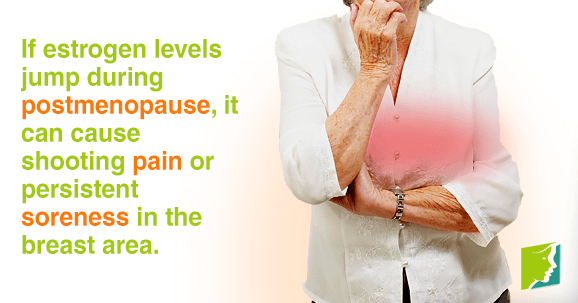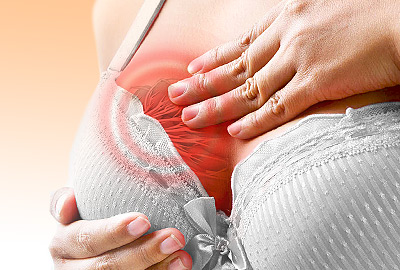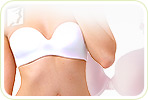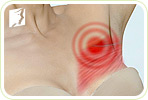Breast pain, also known as mastalgia, can occur for different reasons during various stages of life. Whether you are used to it after decades of premenstrual syndrome (PMS) or you're alarmed to experience it for the first time as you reach postmenopause, it is useful to understand why it's happening.
Discovering the causes and effects of breast pain will make it easier to gauge the severity of your symptoms and decide on a suitable treatment. Learn more about the details of this menopausal symptom so that you can respond appropriately.
Why during Postmenopause?
Many women think that once menopause has happened, symptoms will quickly disappear. Although this is true to a certain degree, some side effects may linger and new symptoms also emerge. Although hormone levels remain consistently low, fluctuations can still happen from time to time. If estrogen levels jump, it can cause shooting pain or persistent soreness in the breasts.
What Are the Different Types of Breast Pain?
Breast pain occurs most frequently in two different ways. The first and less common type is non-cyclic breast pain. This pain is constant and usually has a clear cause, such as arthritis or physical trauma.
The other type, which is the one commonly associated with PMS and hormonal imbalance, is called cyclic breast pain. This usually emerges at certain times of the month, and many women can sense when it's coming on because they've observed a pattern. It usually involves mild swelling and a feeling of temporary tenderness rather than constant, active pain.
What Are the Usual Symptoms?
The symptoms of cyclic breast pain differ from day to day, and from woman to woman. It can feel like a lingering soreness, tenderness, or throbbing, or it can be sharp, severe pain from even the lightest impact. Most of the time, it does not cause significant disruption to daily activities and is fairly easy to deal with. In rarer cases, though, it may become nearly debilitating. It's also possible for the painful area to shift from time to time. It can be felt in one or both breasts, concentrated around the nipple, throughout the whole chest, and can even spread to the armpits.
What Are the Remedies?
Three herbs that are traditionally used to relieve breast pain are chasteberry, evening primrose, and dandelion. Evening primrose oil works by providing the body with high levels of omega-3 fatty acids. Studies have found that this herb, combined with additional vitamin E supplementation, may be effective for relieving mastalgia.
Chasteberry is a moderately popular treatment in Europe for cyclic breast pain and other menstrual disorders. Although its active ingredient has not yet been identified, it is generally agreed that chasteberry helps by regulating prolactin levels. Finally, dandelion is a diuretic that can remove excess water from the breasts, alleviating heaviness and soreness.
Should I See a Doctor?
Though these symptoms are usually not serious enough to warrant medical attention, if your pain is constant, excruciating, or seriously affecting your quality of life, you should talk to your doctor. Also, if you notice any new lumps or nipple discharge, it is crucial to have a medical examination as soon as possible.
Breast pain and tenderness can be frustrating and exhausting to deal with. If you are tired of dealing with breast pain, try some of the natural remedies suggested above. And remember, greater awareness brings greater ability to heal and live life to the fullest.
Sources
- Consumer Health Digest. (2014). Macafem: Is Macafem Really Effective To Ease Menopause Symptoms? Retrieved from http://www.consumerhealthdigest.com/menopause-supplement-reviews/macafem.html
- Harvard Medical School. (2005). Breast Pain. Retrieved June 6, 2014, from http://www.health.harvard.edu/press_releases/breast_pain
- National Center for Complementary and Alternative Medicine. (2012). Dandelion. Retrieved June 6, 2014, from http://nccam.nih.gov/health/dandelion
- National Institutes of Health. (2012). Breast pain: MedlinePlus Medical Encyclopedia. Retrieved June 6, 2014, from http://www.nlm.nih.gov/medlineplus/ency/article/003152.htm
- NYU Langone Medical Center. (2013). Chasteberry. Retrieved June 6, 2014, from http://www.med.nyu.edu/content?ChunkIID=21649
- Pruthi, S. , Wahner-Roedler, D. , Torkelson, C. , Cha, S. , Thicke, L. , Hazelton, J. & Bauer B. (2010). Vitamin E and evening primrose oil for management of cyclical mastalgia: a randomized pilot study. Alternative Medicine Review, 15(1), 59-67 Retrieved from http://www.ncbi.nlm.nih.gov/pubmed/20359269
- University of Maryland Medical Center. (2011). Evening Primrose Oil. Retrieved June 6, 2014, from https://umm.edu/health/medical/altmed/herb/evening-primrose-oil
- Van Die, M. , Burger, H. , Teede, H. and Bone, K. (2013). Vitex agnus-castus extracts for female reproductive disorders: a systematic review of clinical trials. Planta Medica, 79(7), 562-575. Retrieved from http://www.ncbi.nlm.nih.gov/pubmed/23136064




